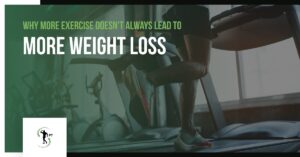Weather you compete in bodybuilding or simply train to look your best, if you have been training for any prolonged period of time you no doubt would have seen your progress come to a screeching halt. After all it’s not uncommon for a natural bodybuilder near the ceiling of their genetic potential to struggle to gain 1kg of lean muscle per year.
I’ve been in the iron game for over 15 years and have been competing as a natural bodybuilder for the last 7 years. During this time I’ve had the privilege of being coached directly by some of the top coaches in the world such as Milos Sarcev and Charles Poliquin.
While I did take away a lot from that experience I have come to learn more recently that a lot of the methods used by the top bodybuilders and coaches in the world are not optimal for natural lifters. It wasn’t until I broke away from the dogma in past few years that I was able to take my physique to the next level and break through a plateau that I had been stuck on for years.
In this article I want to share with you the top 5 things I did differently in order to get there.
1. Being Patient
I might sound like captain obvious here but hear me out. I’ve been training myself and clients for over 15 years and my opinion nothing derails a person’s progress more than lack of patience.
Everyone wants results tomorrow but not many are prepared to put in the work day in and day out despite the diminishing returns. Lack of patience leads to frustration which typically manifests in one of 3 scenarios.
The first scenario is when a person becomes demotivated which leads to inconsistency and lack of progress, and eventually giving up or quitting.
The second scenario usually manifests as yo-yoing. These individuals due to lack of patience push hard for short periods at a time which eventually leads to burn out. Once they take their foot off the gas pedal they find themselves almost back at square one.
The third scenario is when guys become frustrated with their slow progress and decide to jump on the gear. Accept for pro bodybuilders and a few guys who stay on gear year around a lot times these guys experience some short term progress but then also end up back at square once they come off their cycle.
That because if you can’t see yourself doing something a year from now it’s not sustainable.
Bottom line is that patience is virtue. Nothing worthwhile comes overnight. The sooner you realize and accept that the better off you will be because you will have more realistic expectations, less frustration, and you will enjoy the journey a whole lot more.
After all the journey is what it’s all really about and if you don’t enjoy it maybe consider pursuing another endeavour.
I’m not a patient person by nature. It’s something I’ve had to work on over the years and its first thing I try to instil in my clients these days because I know that it will set them up for long term success.
Everything I preach is based on this principle which is why I am addressing it here first!
2. Slow Progression
The second point ties in directly with the first. For a natural lifter near the ceiling of their genetic potential progress become painfully slow.
Typically we have short periods where we make some decent progress followed by long periods of stagnation or regression. This is because the stress required to force adaptation needs to be followed by a period of unloading.
The body needs time to replenish its energy stores, for the nervous and endocrine systems to recharge, and for the joints and muscles to adequately repair.
There also needs to be a period where we become re-sensitised to the training stimulus before we increase it again. During this period progress may be painfully slow or non-existent.
Elite powerlifters and other athletes have known for decades that they cannot be at their peak all the time which is why after a meet or competition they start their new cycle with low loads and build up progressively over the course of their macro-cycle.
This is how the birth of periodization in sports came about. Bodybuilders from the Golden Era like Arnold and Frank Zane used a similar approach back in the 70s in which they would increase their workload over the course of the year in order to peak for the Olympia.
From my experience I have found that for a natural athlete you can continue to increase their workload progressively for about 12 to 16 weeks before you have to back off and reset. This is the basis for my own periodization model which I use with myself and my clients.
3. High Frequency Training
Training a muscle group once a week may cut it for guys on the gear but it’s not optimal for naturals. Due to the repeated bouts effect the duration of elevated protein synthesis post training diminishes with training age.
For an advanced lifter protein synthesis will be back to baseline within 24-48 hours following a workout. This means if you are hitting a muscle group only once a week, the majority of the time not only are you not growing you are actually regressing.
The reason guys on gear can get away with it is because anabolic steroids increase the time course and magnitude of muscle protein synthesis. For naturals however I recommend hitting each muscle group 2 to 3 times per week.
When training a muscle group 3 times a week, I like using a DUP setup where I alternate between heavy, medium, and light days. This helps manage fatigue throughout the course of the week.
For the most part during the offseason, I stick to about 8-12 sets per body part twice per week. This is my base weekly volume. If I am trying to peak for a competition or a photoshoot, I usually increase the frequency to 3 times per week in the last 8 weeks.
It’s important to note that as you increase the frequency you will initially need to reduce the volume per session or you will hit a wall if your weekly volume increase is too drastic.
The progression in frequency and weekly volume leading up to an event might look something like the following:
|
Weeks |
Session Volume |
Frequency |
Weekly Volume |
|
1-4 |
8-10 |
2 |
16-20 |
|
5-8 |
10-12 |
2 |
20-24 |
|
9-12 |
6-8 |
3 |
18-24 |
|
13-16 |
8-10 |
3 |
24-30 |
Think of it like sun baking. If you are normally accustomed to being in the sun for only an hour and all of a sudden you expose yourself for two hours, you are going to burn. But if you work up to two hours gradually then after a few weeks you will be able to tolerate it.
4. Slow Dieting
The leaner you get and the lower you take your calories hormones like leptin, thyroid, and testosterone will tank. This means you will become increasingly more catabolic in muscle vs fat tissue.
For assisted athletes this is not as much of a concern as they are taking synthetic derivatives of these hormones. But for a natural athlete it makes it much harder to shed that last bit of body fat without losing hard earned muscle.
The way to get around this is to diet very slowly and to incorporate periodic refeeds and diet breaks. If I am dieting down for a special event I normally give myself a full 8 weeks to drop from 8-9% body fat which I maintain in the off-season down to 5%.
My maintenance intake is around 3800 calories per day and I usually diet on around 3200 to 3300 calories. A couple of times per week I usually go above maintenance to offset muscle loss and metabolic down regulation. This allows me to maintain my muscle mass and strength leading into the event, and prevents me from blowing out afterwards because I can maintain a higher metabolic setpoint.
Because I keep my body fat pretty low year around 8 weeks is generally all I needed to get in contest shape. If you have more fat to lose I recommend a 1-2 week diet break every 6-8 weeks. So if you need to diet for 12-16 weeks to get in shape starting a week earlier and having a diet break midday will make a world of difference.
In that case not only will you be able to diet on more calories and retain more muscle mass but you will also be far less likely to blow out afterwards because your metabolism hasn’t taken as much of a hit.
5. Not Going to Failure Too Often
Looking at the volume and frequency recommendations above you may be thinking that either I am crazy of that I don’t know what the hell I am talking about. Look I will be the first to admin that if you trained at that volume and frequency and took all of your sets to failure you will quickly end up overtraining natural or not.
Is training to muscle failure necessary to stimulate progress in the gym? I mean how many times have we all heard our idols sprouting phrases like “No Pain – No Gain” or “Go Heavy or Go Home”? This leaves most people with the impression, myself included, that every set apart from a few warm-ups must be an all-out effort.
In reality none of the top pros train to muscle failure all the time. It’s just something that they say to sound more hardcore. The same way they all say how important it is to use strict form on your movements when most of them throw weights around with seemingly sloppy form.
The problem is then that misguided natural lifters take this to mean that they have to train balls to the wall all the time or they are not hardcore enough. I see this all the time. I myself was one of those guys.
While training to muscle failure does have its place as it insures you have recruited a maximal amount of motor units for that particular set, it also does have its draw backs. Once you have taken a set to failure your capacity to recruit the high threshold fibres in subsequent sets in greatly compromised. This is due to both peripheral and central fatigue.
What this means is that your overall workload for the session will suffer and it will take your much longer to recover before the next workout. This will greatly eat into your overall weekly volume which is the primary driver for hypertrophy.
Not to mention training to failure too often will also hamper your strength gains. Strength is about building confidence with heavy loads. Training to failure too often destroys your confidence. The strongest guys in the world rarely train to failure. Just ask Ed Coan who is the Michael Jordan of powerlifting.
In fact, since I stopped training to failure as often, an instead increased my volume and frequency, I was able to increase my bench press from 140kg for 3 reps which I had been stuck on for years, to 140kg for 10 reps.
Sometimes it really is matter of training smarter not harder!,







